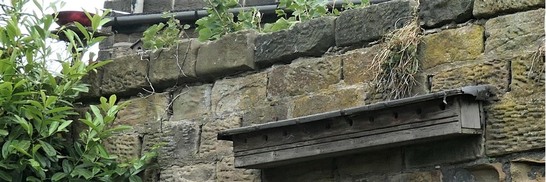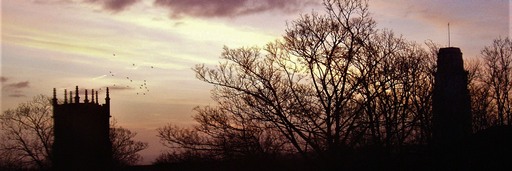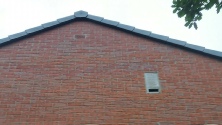

Biodiversity
Action
Plan
Buildings and wildlife. Pipistrelle Bats and birds such as House Sparrow, Swallow, House Martin and Swift, all rely on our houses and other buildings for their roosting and/or breeding requirements. Other buildings are also important with the Peregrine Falcon regularly nesting on taller buildings, including in urban Barnsley. Barn Owls too nest in farm buildings and increasingly take advantage of nest boxes.

Buildings are now required to be more insulated and air-tight, removing the gaps and spaces usually used by building-reliant birds and bats. There are however many options to build-in spaces for nesting and roosting whilst still maintaining modern standards. It is also useful for nest boxes to be made available on and nearby.
Integrated nest boxes commonly known as ‘swift bricks’ in fact provide nesting opportunities for many small cavity-nesting birds. Birds such as House Sparrows can use swift boxes but swifts cannot use house sparrow next boxes.
National Planning Guidance highlights the use of swift bricks and bat boxes as providing important benefits for wildlife. The Building Better Building Beautiful Commission recommends ‘bricks for bees and birds in new build homes’.


Buildings and wildlife
Links
Designing buildings:
Biodiversity in Urban Environment
Swift Conservation
Swift Bricks -universal nest brick
CIEEM
Swifts and developments erticle
RSPB: swift-mapper
Living roofs and green/habitat walls can augment urban green spaces, shrubberies and planted up or grassed areas.
Barnsley Council’s SPD states that applicants when submitting planning applications are expected to provide biodiversity features proportionate to the size of the development, the proposed impacts of the site and in relation to nearby habitats.
Appendices give examples of such features for major developments and smaller scale commercial and industrial buildings (<1000 m2) as well as some case-studies.
They include biodiversity features for the buildings as well as for the overall site of the development.
Good practice
- In residential developments, clusters of 2-4 swift bricks in suitable areas, in a ratio of 1:1 swift bricks and dwellings..
- In commercial developments: one swift brick per 6m2 of wall in clusters of 3 or more, with ~1m between entrance holes.
Designing for biodiversity: A technical guide for new and existing buildings. Gunnell et al RIBA 2013, 2nd edition
- quoted in above CIEEM article

National Planning Policy Guidance states: relatively small features can often achieve important benefits for wildlife such as incorporating ‘swift bricks’ and bat boxes in developments and providing safe routes for hedgehogs. NPPG 2019 p.023